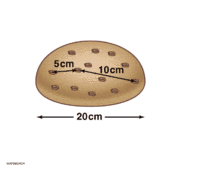
Photo from wikipedia
One of the directly measured quantities which are used in monitoring the orbital motions of many of the S stars revolving around the Supermassive Black Hole (SMBH) in the Galactic… Click to show full abstract
One of the directly measured quantities which are used in monitoring the orbital motions of many of the S stars revolving around the Supermassive Black Hole (SMBH) in the Galactic Center (GC) is their radial velocity (RV) $V$ obtained with near-infrared spectroscopy. Here, we devise a general approach to calculate both the instantaneous variations $\Delta V\left(t\right)$ and the net shifts per revolution $\left\langle\Delta V\right\rangle$ induced on such an observable by some post-Keplerian (pK) accelerations. In particular, we look at the general relativistic Schwarzschild (gravitoelectric) and Lense-Thirring (gravitomagnetic frame-dragging) effects, and the mass quadrupole. It turns out that we may be on the verge of measuring the Schwarzschild-type 1pN static component of the SMBH's field with the S2 star for which RV measurements accurate to about $\simeq 30-50~\textrm{km s}^{-1}$ dating back to $t_0 = 2003.271$ are currently available, and whose orbital period amounts to $P_\textrm{b} = 16$ yr. Indeed, while its expected general relativistic RV net shift per orbit amounts to just $\left\langle\Delta V^\textrm{GE}\right\rangle = -11.6~\textrm{km s}^{-1}$, it should reach a peak value as large as $\Delta V_\textrm{max}^\textrm{GE}\left(t_\textrm{max}\right) = 551~\textrm{km s}^{-1}$ at $t_\textrm{max} = 2018.35$. The periastron shift $\Delta\omega^\textrm{GE}$ of S2 over the same time span will not be larger than $0.2$ deg, while the current accuracy in estimating such an orbital element for this star is of the order of $0.6$ deg. The frame-dragging and quadrupole-induced RV shifts are far smaller for S2, amounting to, at most, $0.19~\textrm{km s}^{-1},0.0039~\textrm{km s}^{-1}$, respectively. Further studies should be dedicated to the impact on the RV of possible diffused mass distribution in the GC and of other individual stars inside and outside the orbit of S2.
Journal Title: Monthly Notices of the Royal Astronomical Society
Year Published: 2017
Link to full text (if available)
Share on Social Media: Sign Up to like & get
recommendations!